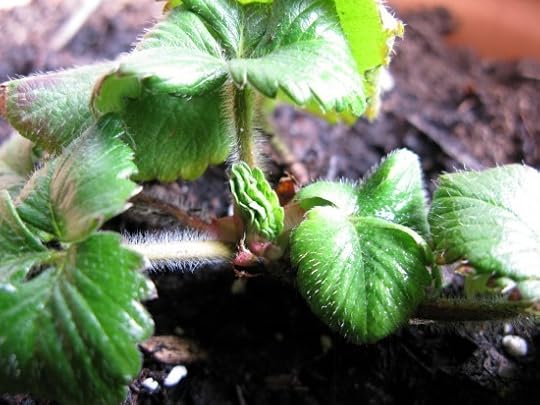Saving the Marshall: Part 1
Poor Megan, Maria & John.
Every day in Beekman World brings a new, unexpected challenge. Recently, while we were traveling halfway across the country, they got this email from us:
“Hey Guys…We just found out that our four Marshall Strawberry plants have been shipped. It’s looks like it’s going to be below zero so they won’t survive long sitting on the porch. Can you keep a lookout for them? There’s only 600 of them in the world, we can’t let them die!!!!!!!!!!”
We got hourly updates for the next two days:
“No strawberries yet.”
“Not yet.”
“Still no berries.”
“THEY’RE HERE! WE GOT THEM! THEY’RE ALIVE!!! GETTING READY FOR TRANSPLANT….”
Once again, they saved the day. Or in this case, they saved some culinary history.
Here’s what they (potentially) saved. Worth it, right?
Marshall strawberries were once one of the most favored strawberry varieties in the world. First discovered in Boston in 1883, it achieved peak popularity and propagation West Coast, where it once filled field after field of Washington, Oregon & California farms.
Why was it so popular? For the right reason: it tasted amazing. James Beard himself declared the Marshall: “the most delicious strawberry ever grown.” The sugar content is so naturally high that they only last hours after ripening…not days. When Queen Elizabeth and King George VI visited Vancouver, farm workers were sent into the fields to pick the ripest berries for a royal luncheon, and Canada’s custom regulations were waived to allow the fruit to enter the country without any delay.
But by the mid 1960′s, there was hardly a Marshall strawberry field to be found. Why? We’ve told this next part of the story so many times we could copy and paste it from an old post:
With the rise of our present day industrial food production and distribution network, the [insert great tasting heirloom vegetable/fruit] became extinct due to its susceptibility to disease, fragility during transport, and short shelf life.
Except the Marshall didn’t go extinct. But only just barely. A single clone of the Marshall was saved by the USDA’s Germplasm Repository in Corvallis, Oregon.
We’re not sure naming something a “Germplasm” is great marketing, but whatever. Thank you, USDA, for saving the Marshall.
In 2004, it was named one of the ten most endangered foods in the USA by the RAFT (Renewing America’s Food Traditions) coalition. And in 2007, an artist named Leah Gauthier requested some runners from Corvallis, and since she planned on growing them for food, not research, they agreed. She’s since propagated additional plants from runners, and now has enough for sale. But just barely. Only 600 small plants are available this year.
The plants are shipped in these cute little “pouches.”
Each has a little tag with the plant’s individual number. We have 21-24 out of 2013′s batch of 600:
They also come with explicit directions for transplanting indoors (if your season is cold right now) or out. And certificates of authenticity:
Because we believe in both biodiversity of our food supply (that’s a fancy way of saying “healthy choices,”) and saving history, we’ve decided to make Beekman 1802 Farm a permanent home for the Marshall, and are dedicating an entire bed to propagating them.
These plants aren’t cheap. So we’re starting with four, and will grow them out season by season until the bed is full. But we believe the investment is well worth it to save this important variety. So far they’re looking good:
Even got a new shoot forming!
Nice sunny window…waiting till spring… Wanna help us save the Marshall?
Wanna help us save the Marshall?
You can learn more and order online here. Because of their scarcity and fragility in shipping, they do come at a price, but there are options at the link that make them cheaper.
Plus…think of the reward. Mmmmm.
OR, if you’re lucky enough to live around Brooklyn, you can come pick up plants at Brooklyn Flea, March 16 +17, and save the shipping fees entirely!
Please let us know if you purchase any. We’d love to be “Marshall cousins” with you. We’ll update you on our progress as the season progresses, and will certainly share pics of the first (knock wood) fruit.
What should we make with the first berries?










